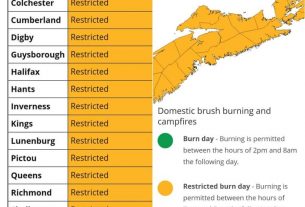**** Info via Environment Canada
Drought concerns grow in Canada
It’s looking very dry across much of Canada these days.
According to the latest update from the Canadian Drought Monitor, 71% of the country was experiencing abnormally dry or drought conditions of varying intensity as of the end of February – including 85% of the nation’s agricultural lands. Currently, the most severe drought conditions are concentrated in western Canada, with zones of extreme and exceptional drought occurring in parts of Alberta, British Columbia, southern Northwest Territories, extreme western Saskatchewan, and extreme southern Manitoba.

Map displaying the widespread drought of varying severity levels across the country as of February 29. Severe drought (D2) happens once every 10 to 19 years, extreme drought (D3) once in 20 to 49 years, and exceptional drought once in 50 years or more. Source: Agriculture and Agri-Food Canada.
Following an unusually warm 2023 coupled with below-average precipitation in many areas, drought continues to worsen across the West as El Niño has brought warmer and drier conditions than average. While heavy rainfall in late January marginally improved drought conditions across Vancouver Island and the lower mainland of British Columbia, it caused significant snowpack melting at higher elevations. February also saw above-normal precipitation in parts of western Canada, but the amount was still insignificant in terms of drought relief. Mountain snowpacks across much of western Canada remain below-average, raising concerns about possible water shortages in the upcoming summer months.
According to the Government of Alberta, low spring runoff resulting from below normal snowpacks doesn’t bode well for mountain reservoirs in many areas, including southern Alberta, where many are already well below capacity. These reservoirs provide a critical water supply for downstream agricultural and industrial activities, along with community use. Across southern Alberta, soil moisture levels for farming and ranching are already considerably low, with dwindling ground and surface water supply putting significant strain on the agricultural industry.
Below-average snowpacks and a hasty spring melt in 2024 could also prompt an early start to the wildfire season. If warm and dry conditions return without significant precipitation, this could lead to another intense wildfire season for the second year in a row.
The current three-month outlook suggests a moderate to high probability of warmer than average temperatures, with mixed signals for precipitation accumulation across the country. At this point, significant early spring snowfall along with spring and summer rains will be necessary to help offset the ongoing deficit in moisture that is developing in many areas, and in preventing even worse impacts from intensifying drought across much of the west.
.



